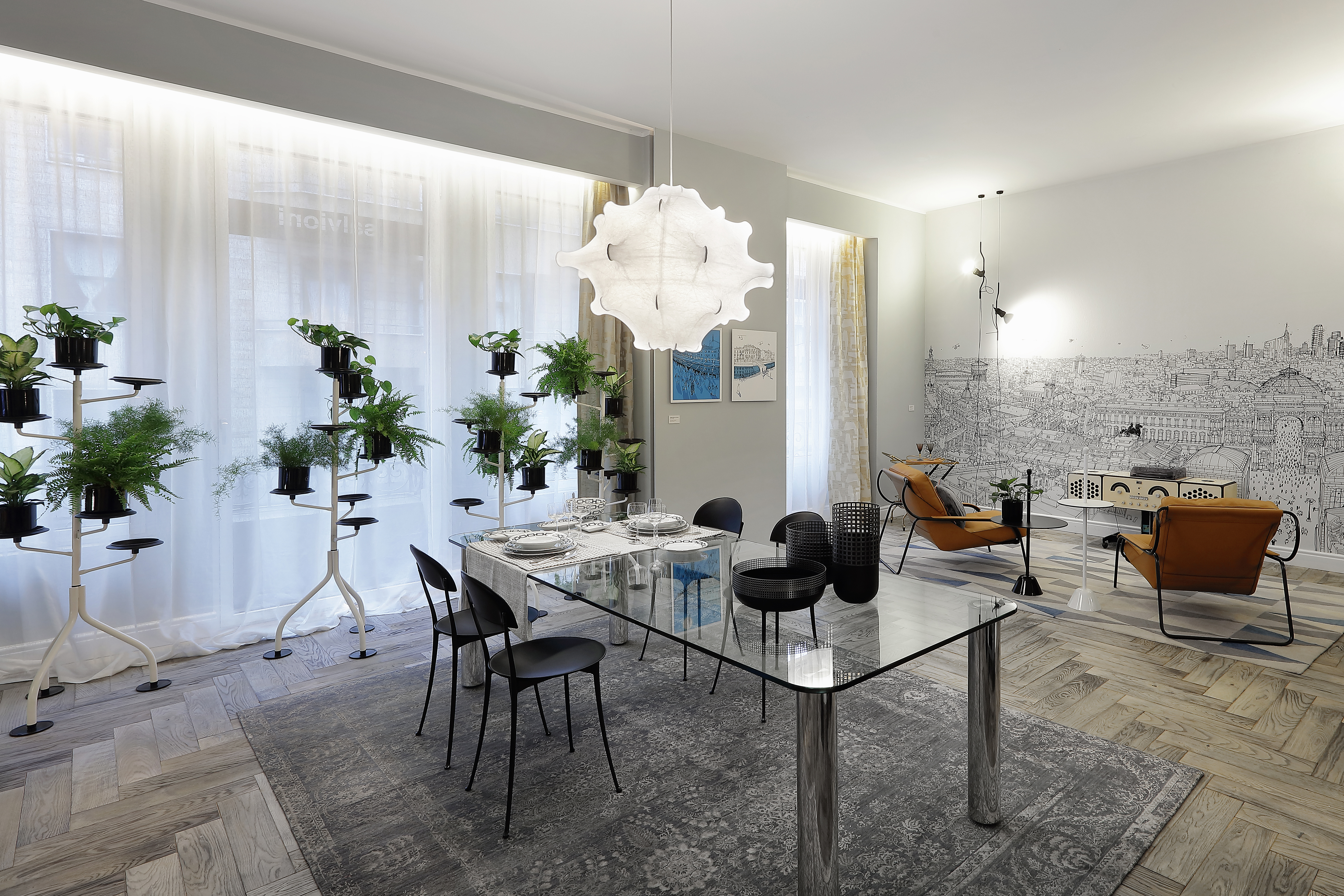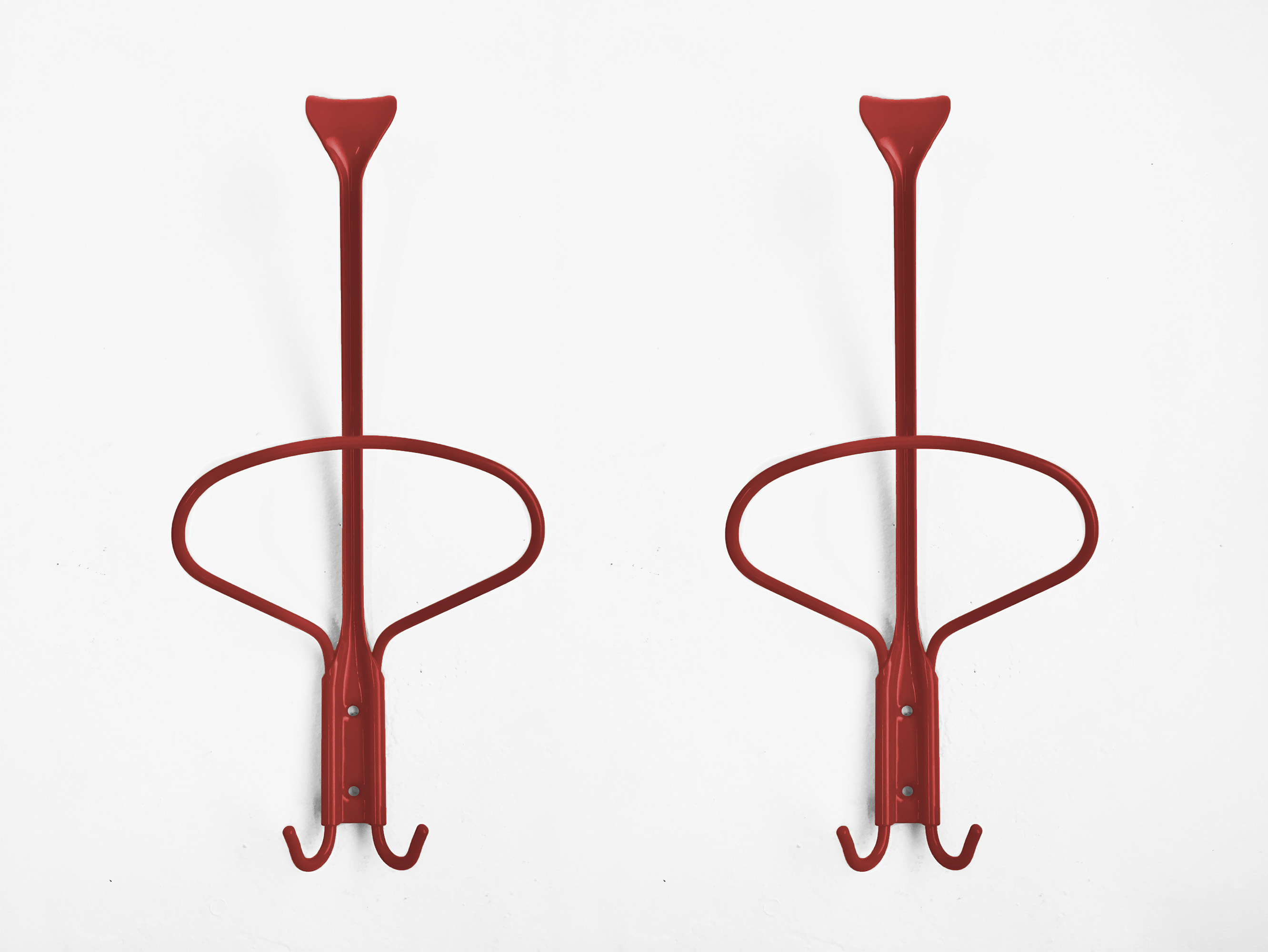"When I was called by Aurelio Zanotta, first and then by his daughter Eleonora, with the task of designing a series of useful objects for the so-called domestic "landscape", I was able to design expressing my determination to seek universal solutions, for society and for the needs of the real world. [...] Because fewer and fewer objects are needed and those to be put into production must be beautiful, useful, durable and at the service of a new society. It's time to end it with things seen from the market perspective. We need more design honesty, and more awareness". Enzo Mari
The collaboration between Zanotta and Enzo Mari began in 1980 with the Tonietta project.
Aurelio Zanotta went to Enzo Mari with a sixth grade rock climber's nail, the kind that uses the cracks in the stone wall to support the climber's body.
This is how Tonietta was born, the chair with which Zanotta won the Compasso d'oro in 1987 and the first Chair Fair award at the International Design Center in New York in 1986.
Tonietta is composed of a structure in polished or black painted aluminum alloy frame. Seat and back in polypropylene covered in cowhide 95 in the colours indicated on our colour card.
D. What is the basis of your projects?
R. I will give an example. In those same years, Cesare Cassina was also thinking about the idea of the rock nail (he was a mountain enthusiast himself). He had thought of having them produced in forged aluminum, very compressed and therefore strong. From Aurelio's idea I thought of having the legs of the chair made of die-cast aluminum with different thicknesses, the two front ones thinner and slightly curved. It took me five years to reach the right thickness and the final design. The help of Penati (then head of Zanotta's technical office) was fundamental, with whom we defined every detail to make the Tonietta work with a brush. I can't stand projects that are born in one morning, just as I can't stand people who come in and ask you for an idea the next day... It takes thought, research and work to design and make a product. The only possible reasons to design are born from the clear communication of a shape and the chair is the easiest form to start from. Four legs, a seat and a backrest. The clean arch of the Tonietta, the thin and strong legs. The assembly system reminiscent of the historical Thonet. The effort is to have maximum resistance with minimum use of material.
D. After Tonietta, you have designed many other pieces of furniture and complements for Zanotta, all of great formal cleanliness, functionality and advanced technological system. Which one you remember with more satisfaction
R. I remember them all. The Ambo coffee table, with its glass tops that are actually two small tables, one low and one high, that fit together at will. The Dongiovanni table, where the legs are joined to the top by a special star-shaped joint designed by myself. And then the Marina chair, the Museo coat stand, the Fonte table, the Daniele upholstered furniture. I do not like to make products for the market, I like to think about formal beauty and how to make it possible by rationalizing production.
D. What kind of public do you think of when you invent a piece of furniture?
R. Out of forty million potential buyers of furniture in Italy, I think there are very few who can approach design today. And it is not just a question of IQ... The first approach should be economic, and the economy leads to the essential. The ideal for me is the way of proceeding of the classical Greek culture. Rather than needs, I want to aim at defending the right to think.
Find out more about Tonietta

After the fantastic results between critics and the market achieved with Tonietta, Enzo Mari and Eleonora Zanotta (Aurelio's daughter, who managed the company after the death of her father in 1991) set themselves the new goal of building a dictionary of durable objects, measured in form and expressly dedicated to a precise function.
Thus Museo was born a single element in scratch-resistant painted steel, black or white, and in red for the Christmas special edition.
The new coloring is intended to think of an object inspired by the festivity, but it is also an opportunity to remember the collaboration with Enzo Mari.
Find out more about Museo

© Fuorisalone.it — All rights reserved.





















































































